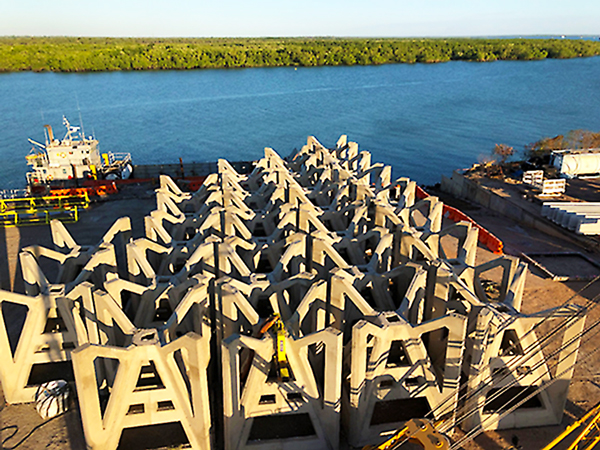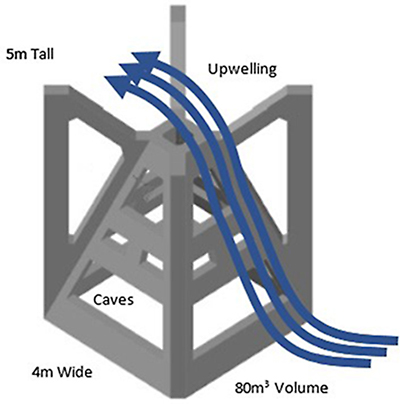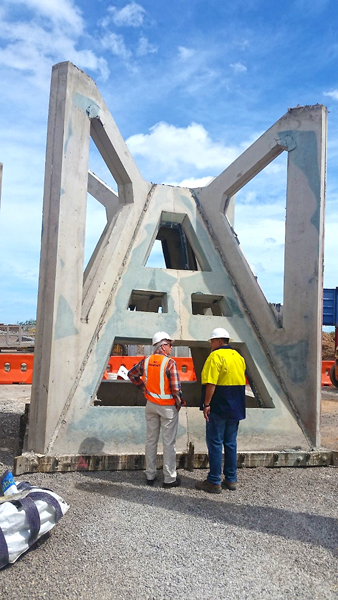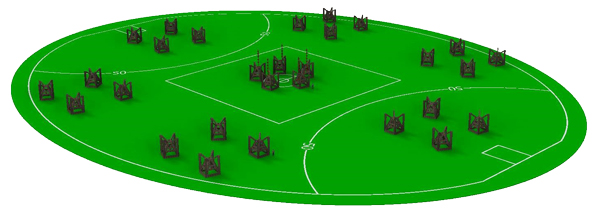DARWIN'S NEW ARTIFICIAL REEFS
The Northern Territory Government has committed to invest $50 million over five years to improve the recreational fishing experience in the Territory. This investment offers an unprecedented opportunity to provide a lasting legacy that significantly improves the quality of our recreational fishing experience, not just through improved access and infrastructure for locals and tourists alike, but also through enhancing the quality of our fishing opportunities – further confirming the Top End as a world-class fishing destination.
One of the signature projects of the $50 million program is the deployment of four new artificial reefs in the greater Darwin area in late 2019. Not only will these artificial reefs create new recreational fishing locations but will also aid in the recovery of at-risk reef fish. The new artificial reefs are specifically-built underwater structures designed to promote marine life and diversify fishing opportunities.
The new reefs will help to increase long-term fisheries production and enhance the sustainability of key fishery resources. Historically in the Territory, artificial reefs have been constructed using materials of opportunity, such as old bus shelters, pipes, surplus road culverts and decommissioned ships.
In recent years, there has been a global shift towards using designs and construction materials that have been engineered to address specific objectives and to suit prevailing environmental conditions. The designs take into consideration the water depth, oceanographic conditions, the sea bed and habitat preferences of particular marine species. In 2018, the Government appointed Cardno environmental consultants to provide advice on the most suitable locations and designs.
As well as environmental requirements, other factors that the consultants considered included commercial vessel traffic and proximity of existing fishing infrastructure. Feedback from the community was a critical part of the whole process. Four sites were recommended by Cardno, with input from the Recreational Fishing Advisory Council: two between North Gutter and Lee Point; one in the Dundee region; and one between the Vernon Islands and Cape Hotham. Each reef will comprise 29 modules clustered in groups of four or five, with each reef field covering an area of about 2.5 hectares or about the same area as TIO stadium at Marrara.
One hundred and sixteen modules, made from 3000 tonnes or 180 truck-loads of concrete, will be required for the four reefs. Each module will be stable, free standing and open shaped, constructed with reinforced marine grade concrete. Each module weighs 23 tonnes and is five metres tall and four metres square at the base.
Their design replicates the best features of a natural reef but with enhanced qualities for maximum effect. This includes internal caves, cryptic habitat, vertical relief and a shape that promotes upwelling of water flow will promote biodiversity, provide new fishing areas, and reduce pressure on existing natural reef and fish stocks. The modules have an expected operational life in excess of 100 years.
A variety of reef-associated species will benefit from these new reefs:
• bottom dwelling fish that prefer very close contact with reef structures (such as black jewfish, cod and coral trout(, • those that remain adjacent to the structures (such as snappers and emperors(, and • pelagic species that visit occasionally (such as mackerel and tuna).
The artificial reefs will assist fish productivity for the long term, support the sustainability of key fishery resources and augment recreational fishing opportunities well into the future.








